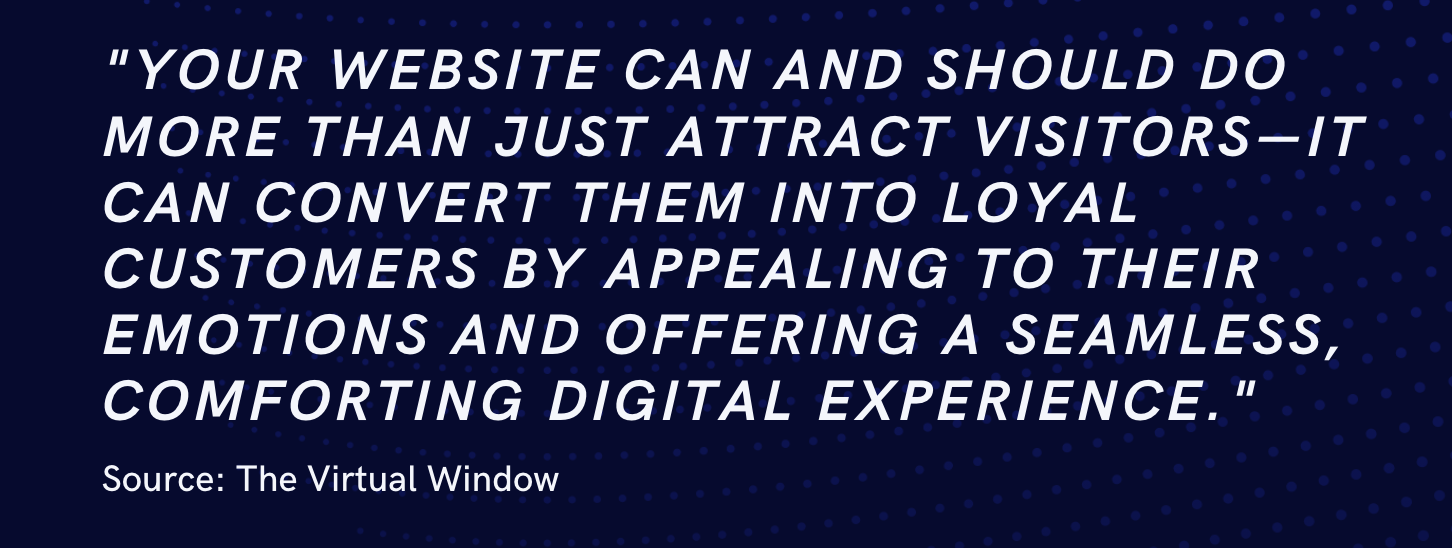Web Design Psychology: Creating Emotional Connections in 2024

In the digital ecosystem of 2024, engaging your audience through your website’s design is a psychological jigsaw where every piece plays a critical role in crafting the user experience. To truly resonate and retain users, a deep dive into UI/UX best practices is essential for weaving emotional connections through intelligent design. The ability to create aesthetically pleasing designs while simultaneously engaging users and encouraging repeat visits or conversions is paramount to any successful website.
Trust and Transparency: In today’s fast-paced digital world, trust is not just a commodity; it’s actual currency. Websites must exude honesty and reliability from the first interaction to establish trust. Simplifying your site’s navigation to enhance user comfort and avoiding intrusive design elements, such as overbearing pop-ups, can help users feel comfortable rather than overwhelmed. The goal is to create a welcoming digital environment where users feel respected, secure, and inclined to stick around. Graphic Design Junction notes that “trust in 2024 can also be enhanced through mobile-first designs that prioritize user experience across devices, ensuring seamless navigation and readability on smartphones and tablets” (Graphic Design Junction).
Emotional Resonance through Design: Designs in 2024 are becoming more vibrant and textural, incorporating rich compositions that use colors, wild typography, textures, and patterns to create emotionally engaging websites. As highlighted by Webflow, “the color palette and typography of your website do more than just fill space—they evoke emotions” (“Webflow Blog”). This trend emphasizes the role of color palettes and typography in guiding the user’s journey with emotional intelligence. Modern design trends favor subtle uses of color to communicate energy, calmness, or professionalism, depending on your brand’s voice. Typography also plays a pivotal role, with font choices that reflect the brand’s personality while ensuring readability across devices and platforms.
Consistency is Comfort: Adhering to familiar design patterns and visual flows, such as the well-known ‘Z’ pattern for scanning content, meets user expectations and enhances comfort. Consistency in design reassures users and reduces cognitive effort, making the digital interaction feel more intuitive and reliable. Looka emphasizes that “visible grid layouts are trending, offering a transparent, retro look that organizes content efficiently and enhances user navigation” (“Looka”). Unless your site specifically aims to disrupt norms, maintaining visual harmony across all pages is essential for reinforcing brand identity and user confidence in your digital presence.
Strategic Use of Imagery and Interactive Elements: With technological advancements, including AI and augmented reality, website imagery has moved beyond traditional boundaries. Today’s images are high-quality and interactive, offering users an immersive experience that deepens emotional connections. However, interactiveness for the sake of interactiveness can turn users off. Graphic Design Junction highlights that “the use of micro-interactions—small, animated responses to user actions—can significantly enhance user engagement by providing instant feedback and making interactions more enjoyable” (Graphic Design Junction). When paired with interactive elements, strategic imagery can captivate attention, tell compelling stories, and engage users on a deeper level.

Mastering Negative Space: Modern web design emphasizes using negative space—or whitespace—to create a focus point for users. By decluttering the page and the user’s visual field, you can guide users naturally toward the most important information or calls to action. The Wix Blog notes that “a well-organized space can transform user experience from chaotic to harmonious, encourage longer engagement times, and reduce bounce rates” (Wix Blog). Integrating minimalism and eco-friendly design principles also aligns with the growing trend towards sustainability in web design, optimizing code and resources to create faster, more efficient websites.
Your website can and should do more than attract visitors—it can convert them into loyal customers by appealing to their emotions and offering a seamless, comforting digital experience. The fusion of basic psychological principles with cutting-edge design techniques is more than a trend; it’s an effective strategy for digital marketing that has been around since the first ads were created. It’s clear that websites prioritizing emotional connection and thoughtful design will create more engaging experiences. To learn more about how we fuse psychology and design, click here.






